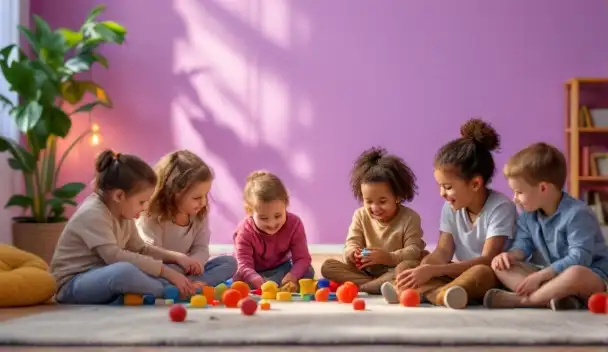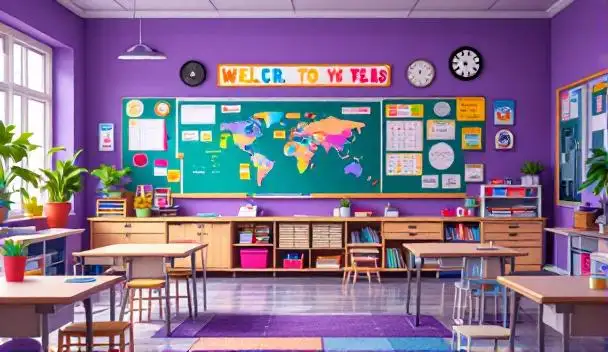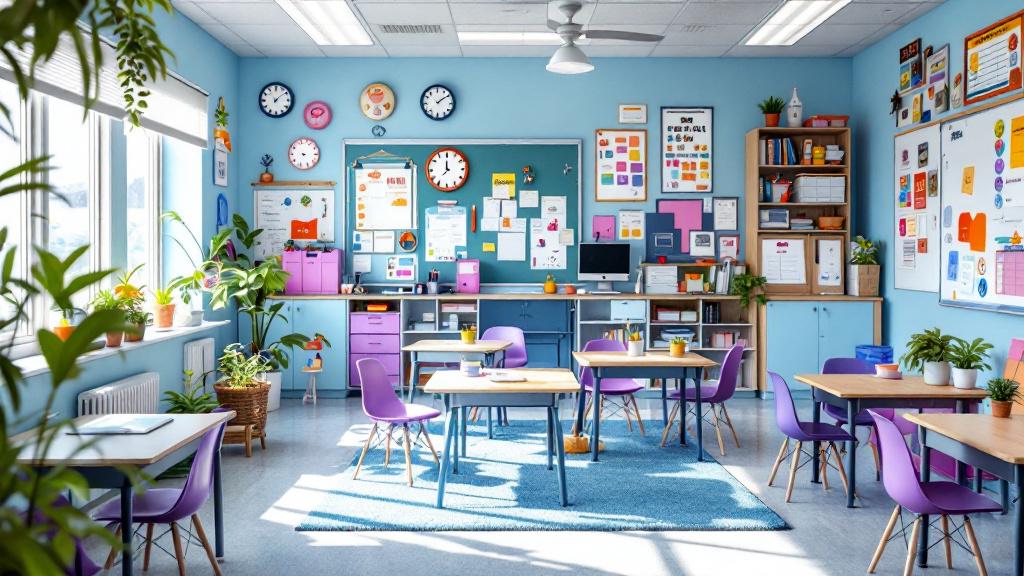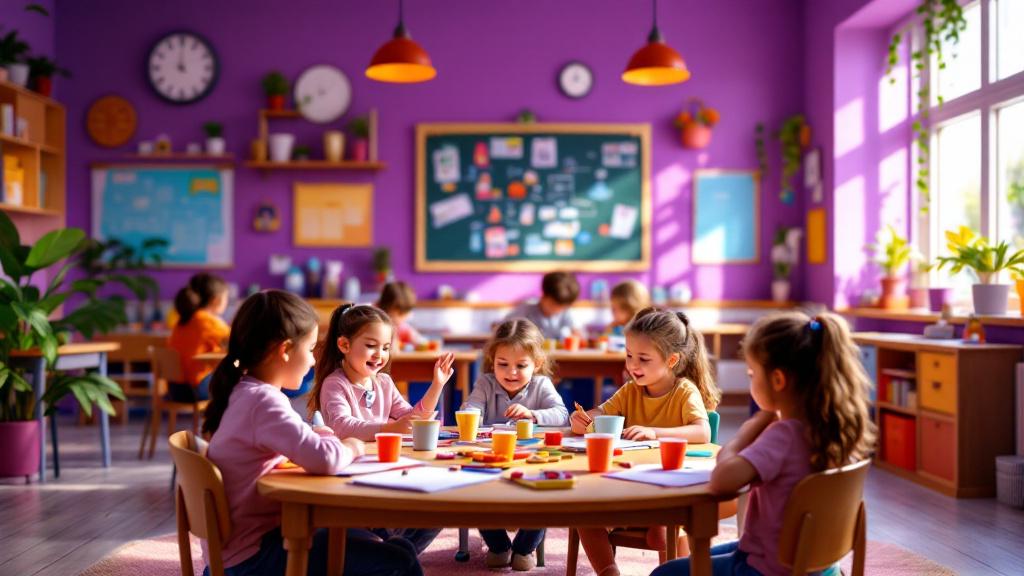Understanding and Supporting Transitions in Children with Autism
Transitions can be particularly challenging for children with autism due to sensory sensitivities, communication difficulties, and anxiety. Effective support strategies can significantly reduce stress, promote learning, and improve overall cooperation. By integrating Applied Behavior Analysis (ABA) techniques with visual supports and structured routines, caregivers and educators can facilitate smoother changes and foster independence.
Core Principles of Transition Support in Autism
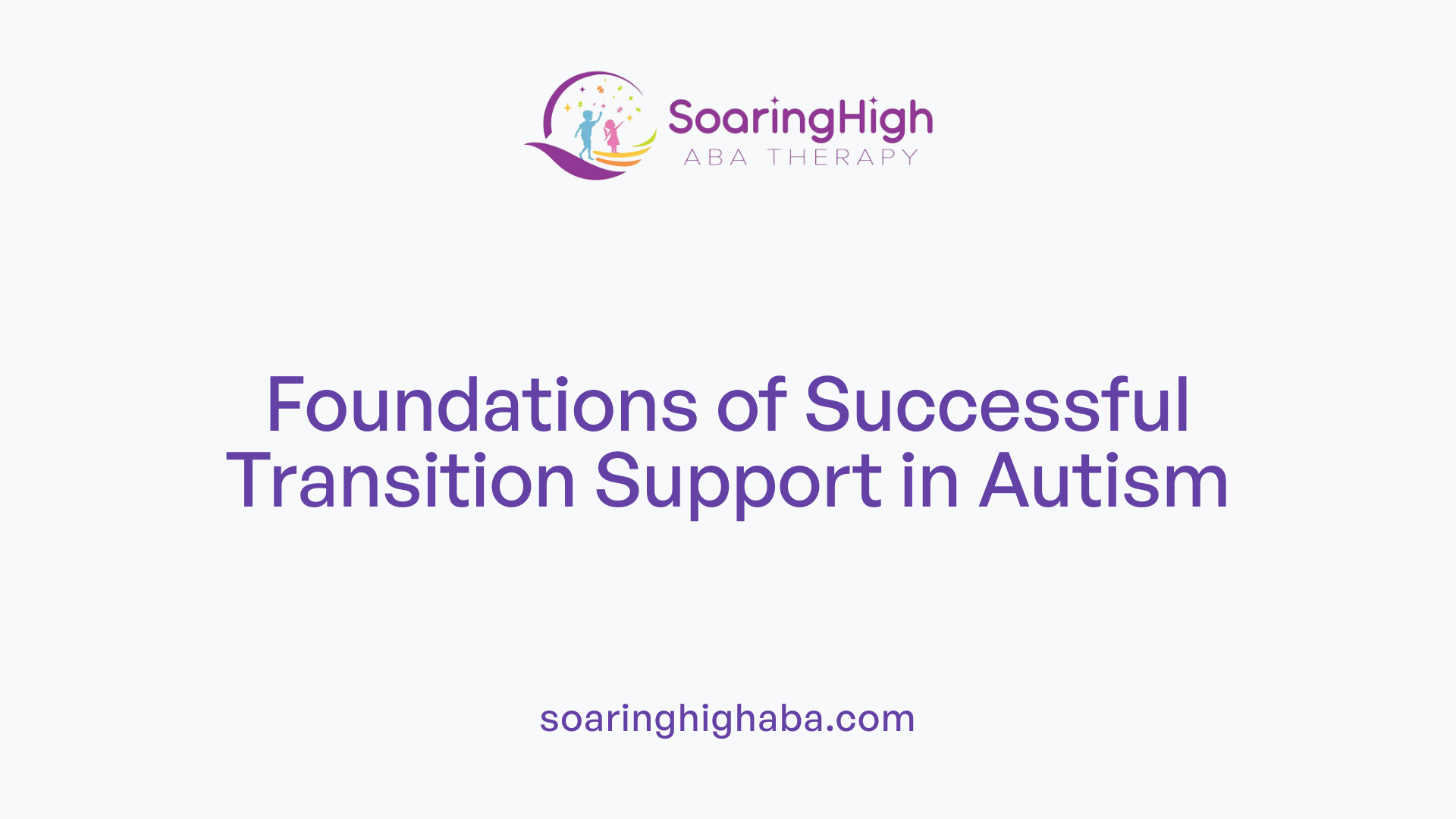
What are effective strategies to support children through transitions?
Supporting children, especially those with autism, during transitions requires a combination of visual, auditory, and behavioral techniques to ease the change from one activity or setting to another. Visual supports are particularly effective; these include visual schedules that display the day's activities, transition cards, social stories, and checklists. These tools help children understand what to expect and foster a sense of predictability.
Using timers or countdowns visualized through clocks, timers, or verbal cues like countdowns also prepares children mentally for upcoming changes. These cues provide them with a clear sense of how long a current activity will last and when a transition will occur.
Preparation is further enhanced by previewing the upcoming transition in calm moments, which builds confidence. For example, caregivers might say, “In five minutes, we will leave the playground,” or use a visual timer to signal the start of a new activity.
Making transitions engaging can reduce resistance. Incorporating preferred activities, songs, or games during transitions makes the experience more positive. Additionally, giving children choices—such as selecting between two preferred activities—empowers them and fosters independence.
Reinforcement plays a vital role in encouraging positive behaviors during these times. Praising children or giving tokens for cooperation or successful transitions helps reinforce desired behaviors. Consistent reinforcement, such as praise or rewards like preferred items, ensures children recognize the benefits of smooth transitions.
Understanding each child's specific needs—such as sensory sensitivities, communication challenges, or heightened anxiety—is crucial for tailoring these strategies. For example, children with sensory sensitivities may benefit from sensory-friendly environments or noise-canceling headphones.
Behavioral techniques, including providing immediate reinforcement and applying differential reinforcement, help promote positive behaviors during transitions. When challenging behaviors occur, conducting functional behavior assessments and developing behavior intervention plans provide structured support.
Collaboration between parents, teachers, and ABA professionals like BCBA ensures consistency across home and school environments. Sharing observations and adapting strategies as the child develops ensures sustained progress.
In sum, effective transition support incorporates visual and auditory cues, prepares children in advance, makes the process engaging, and relies on reinforcement and tailored approaches to promote confidence and reduce anxiety.
Utilizing ABA to Enhance Transition Outcomes

How can ABA methods be used to facilitate smoother transitions for children?
Applied Behavior Analysis (ABA) offers practical strategies to help children with autism manage transitions more effectively. One central approach involves using visual aids such as timers, visual schedules, and transition cards. These tools provide concrete, predictable cues about upcoming changes, helping children understand what is coming next and prepare mentally.
Verbal countdowns and social stories are also invaluable. A verbal countdown, like saying "3, 2, 1, time to go," gives children a clear signal to anticipate the transition. Social stories, which are simple narratives, explain upcoming changes in a reassuring way, setting expectations and reducing anxiety.
Creating individualized transition plans is essential. These plans incorporate the child's specific needs, preferred activities, and effective prompts. For instance, pairing preferred activities with less preferred tasks through a first-then reward system can motivate children and foster cooperation.
Sensory strategies also play a role. Incorporating activities that support the vestibular and proprioceptive systems can help children regulate their responses to changes, reducing potential over- or under-sensitivity.
Combining ABA with occupational therapy approaches can further improve success. For example, skill-building in motor, sensory, and perceptual areas enhances a child's ability to handle transitions confidently.
Overall, ABA techniques aim for consistency, predictability, and reinforcement. Immediate praise, tokens, or preferred items reinforce positive transition behaviors, making future transitions smoother.
Visual aids and prompts in ABA
Visual supports simplify complex information, making transitions clearer and less stressful. Tools like visual schedules, timers, checklists, and transition objects serve as cues, helping children understand and anticipate upcoming activities. Transition cards or icons represent specific actions, reducing confusion.
Timers, both visual and auditory, give a clear signal that a transition is imminent. First-then boards structure activities, rewarding children with preferred items or activities after completing less favored tasks.
Reinforcing these visual prompts with positive feedback encourages children to participate actively and reduces instances of challenging behaviors during transitions.
Individualized transition planning
Each child is unique, and successful transition strategies are personalized. Educators and therapists assess the child's strengths, preferences, and challenges to develop targeted plans. Involving caregivers ensures consistency between home and therapy settings.
Effective plans incorporate visual schedules, countdowns, choice-making opportunities, and preferred reinforcement items. Giving children advance warnings about transitions, whether through verbal cues or visual timers, prepares them emotionally and cognitively.
The collaboration between professionals and caregivers guarantees that strategies are effectively implemented across environments, leading to reduced anxiety, increased independence, and overall smoother transitions.
Effective Visual Supports for Transition Management

What visual supports can help children with autism during transitions?
Children with autism often face challenges when transitioning from one activity or setting to another. To ease this process and reduce associated anxiety, visual supports can be highly effective. These tools include visual timetables, environment maps, communication cards, and symbols that clearly depict upcoming activities and locations.
Visual timetables display the daily schedule in a simple, organized manner, allowing children to anticipate what’s next. Environment maps and visual cues help children understand different settings, while communication cards and icons facilitate clearer understanding and expression.
Creating personalized supports is vital. Coproducing transition plans with children, families, and professionals ensures that the visual aids suit each child's unique preferences and needs. Personalization enhances effectiveness and encourages independence.
In addition to visual cues, familiarization activities such as visits to new locations, viewing photos of unfamiliar settings, and social stories explaining upcoming changes can significantly reduce anxiety. These preparation strategies help children understand what to expect, making the transition smoother.
Peer buddy systems and ongoing support from teachers or support staff contribute to positive social experiences and boost confidence during transitions. As a result, children are more likely to participate successfully and with less stress.
The Autism Education Trust and similar organizations offer valuable resources, training, and guidance to help caregivers and educators implement effective visual supports. Overall, combining visual aids with preparatory activities and personalized planning creates a supportive environment that promotes calm, independence, and positive transition experiences for children with autism.
Techniques and Behavioral Strategies for Transition Support
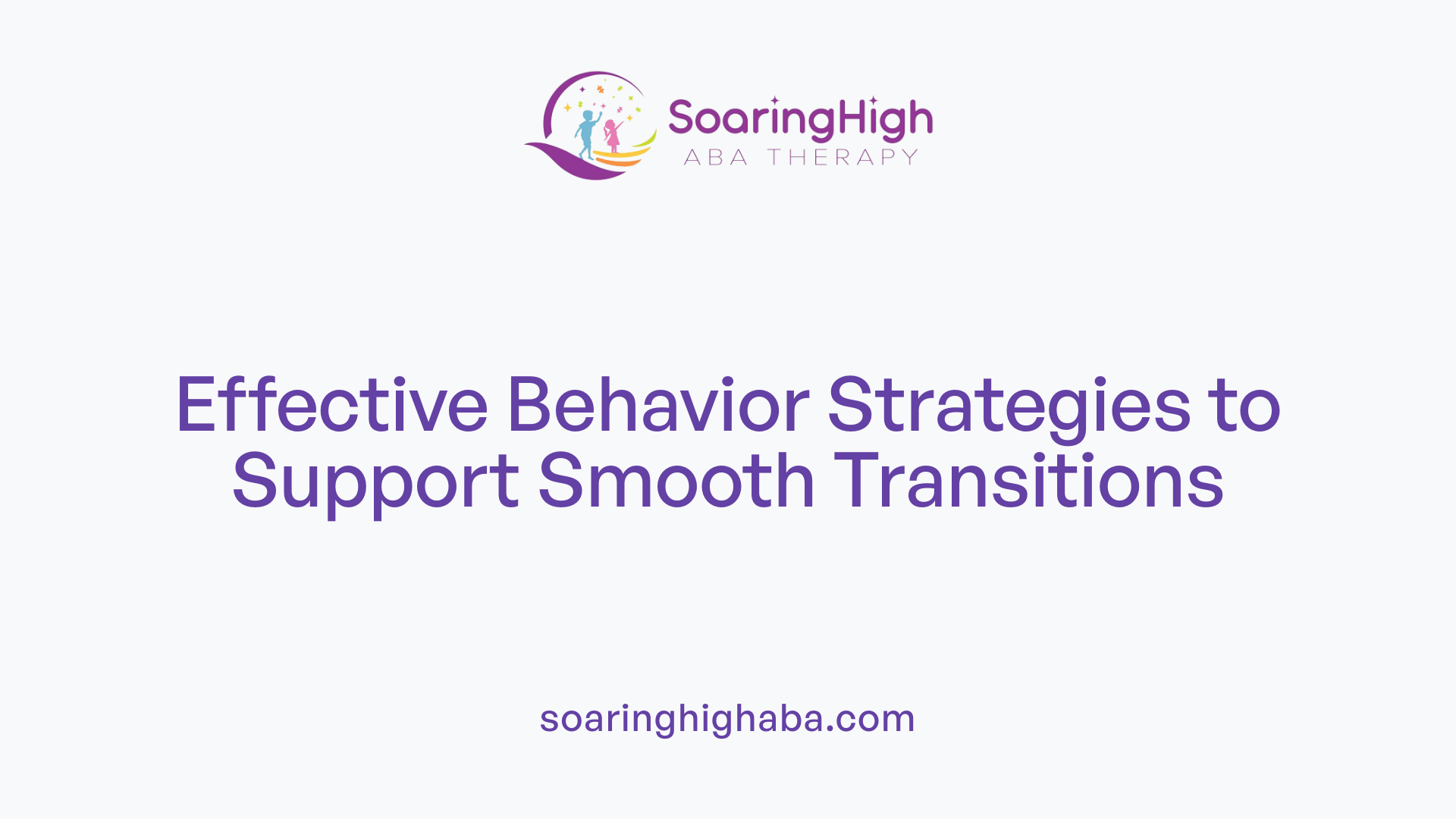
Warning signals and priming activities
Support for children with autism during transitions often begins with giving clear warning signals. Using visual aids like timers, countdowns, and verbal cues helps prepare the child for upcoming changes. Priming activities—such as social stories, videos, or role-playing scenarios—are effective in helping children understand what to expect. These methods provide predictability, which can significantly reduce anxiety and resistance.
Children benefit from visual schedules that outline their day’s activities, allowing them to see upcoming tasks and prepare mentally. Providing warnings about transitions—whether five minutes beforehand or using visual countdowns—gives children a chance to mentally and emotionally ready themselves. Reinforcing these cues with positive messages ensures they interpret the signals as helpful rather than stressful.
Preparation and environment structuring
Setting up an organized environment and planning the transition in advance are vital. In practice, this involves preparing necessary materials beforehand, keeping transitions consistent, and using visual supports to guide children through each step. Tools like transition cards, icons, or checklists make the process more concrete and manageable.
Creating a predictable schedule and routine helps children with autism feel secure. Visual supports, such as first-then boards and fixed containers, provide clear expectations and help children know what is coming next, easing potential distress.
Reinforcing independence during transitions can be achieved by offering choices—for example, allowing the child to select the order of activities or preferred items to use during the transition. This empowerment promotes cooperation and confidence.
Reinforcement and behavior management
Using positive reinforcement is crucial in guiding children through transitions successfully. Immediate praise, tokens, or preferred activities can motivate children to engage in desired transition behaviors.
Behavior management techniques, such as differential reinforcement and token economy systems, reinforce appropriate responses and reduce challenging behaviors. Consistent implementation of these strategies, along with calm and predictable responses from caregivers or teachers, minimizes disruptions.
When challenging behaviors occur, conducting functional behavior assessments helps understand underlying causes, enabling the development of tailored intervention plans. Maintaining a calm demeanor and applying consistent strategies are essential in managing behaviors and promoting smooth transitions.
Collaborating with ABA professionals, such as BCBAs, ensures strategies are effectively personalized and adapted over time. Their guidance supports the integration of visual supports, reinforcement, and behavior management tools into daily routines.
The Role of Multi-Component Support Systems and Collaboration

How can collaboration enhance transition support for children with autism?
Effective support for children with autism during transitions relies heavily on a collaborative approach involving caregivers, professionals, and educators. When all parties work together, they create a consistent, predictable environment that helps children feel more secure and less anxious.
Collaboration begins with shared observations and strategies. ABA therapists, teachers, and families exchanging insights about what works best enables the development of personalized transition plans. For example, consistent use of visual schedules, timers, and reinforcement systems across settings next to foster familiarity and reduce confusion.
Joint training sessions and access to quality resources, such as those offered by organizations like the Autism Education Trust, further improve everyone's understanding of effective transition techniques. These resources often include strategies for using visual supports, countdowns, and social stories to prepare children for upcoming changes.
Maintaining routine and environment consistency across home, school, and community settings helps children with autism navigate transitions more independently. When reinforcement methods are shared and supported at all levels, children are more motivated and confident.
Active involvement of caregivers in practicing transition strategies at home and providing ongoing feedback ensures that interventions are tailored to each child's needs. This adaptability promotes smoother transitions, reduces behavioral challenges, and encourages independence.
In essence, collaboration creates a unified support system where resources, strategies, and expectations align, fostering a safe environment for children during crucial transitional moments.
Fostering Independence and Confidence in Transition Support
Supporting children with autism through transitions is an ongoing process that benefits greatly from structured ABA strategies, visual supports, and collaborative efforts. Developing individualized, predictable routines—augmented with visual aids and positive reinforcement—empowers children to navigate change more effectively. Practicing transitions in calm, supportive environments and tailoring approaches to each child's unique needs fosters confidence and reduces anxiety. Building strong partnerships among parents, educators, and therapists ensures consistency and adaptability, leading to improved behavioral outcomes and greater independence. As well as being an essential element of quality autism support, these techniques foster resilience, enhance learning, and prepare children for lifelong success.
References
- Prevent Meltdowns By Transitioning Effectively With These 4 ABA Tips
- Helping Kids Transition Successfully in ABA Therapy | Childwise
- Autism Transition Strategies: 5 Steps to Smoother Transitions
- Transition strategies for autistic students - LeafWing Center
- Using ABA Strategies to Support Your Child During Transitions
- 4 Strategies to Make Transitions Easier on Unique Learners - n2y Blog
- Blog | n2y
















































